One of the most underrated digital marketing tools is Facebook video. In a digital world, attention spans are short and social media platforms like Facebook have become a staple for communication. According to HubSpot, “Facebook videos now reach more 18-to-49-year-olds on mobile than any TV network in America” (Hubspot). However, creating an engaging Facebook video can be quite the challenge to grab someone’s attention and keep it—even briefly–in this day and age. The key factor when it comes to creating engaging Facebook videos is exactly that: engage your user. That’s why we’re here to share some tips on how to create a Facebook video message that captivates people and keep their attention for more than just a few seconds. “Captive attention is key” says digital marketer Mark Zuckerburg (Zuckerberg). We couldn’t agree more!
Facebook Video Tips: 15 Ideas for More Engagement
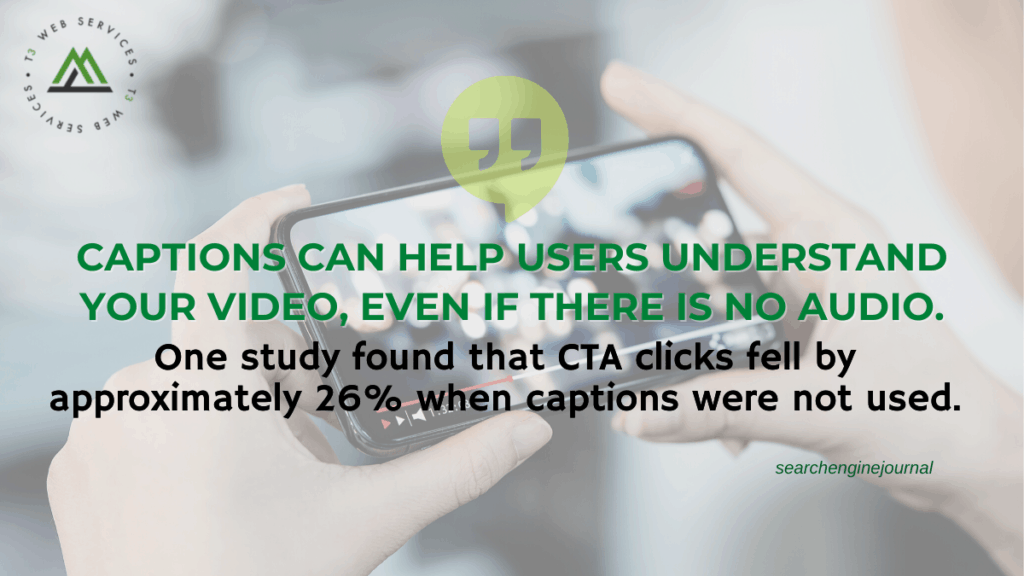

Creating a message that captivates people is critical. The most crucial factor when it comes to creating engaging Facebook videos is exactly that: engage the user. And you have just seconds to do it.
1. Don’t Waste Time at the Beginning
When it comes to creating Facebook videos (and videos, in general) you don’t want to create a long, drawn-out introduction that steadily builds up to some masterful climax that shocks and awes a visitor.
A couple of ideas to help you do this:
- Use powerful thumbnail images.
- Add a nice teaser sentence hinting at what the video is about, providing an informative synopsis.
2. Take Advantage of Captions
There is no definitive proof on how many users watch videos on Facebook with the sound on (though this number is estimated to be 85%), although Facebook now autoplays videos on mobile with sound.
The setting can be disabled, and videos can play with no sound on mobile if a user’s phone is in silent mode.
3. Choose a Name Wisely
Just like optimizing individual webpages (your title tags and meta descriptions), your Facebook video should include an apt title with targeted keywords to increase its visibility.
4. Give Users a Taste of the Content
Taking the time to stop and view a video online can seem like a large time commitment for some.
By providing Facebook users with a brief synopsis of what the content is about, you can help to increase the chances that the video may spark their interest and that they will want to watch it.
5. Add a Call-to-Action
Adding a call-to-action (CTA) provides Facebook users with clear direction on what you want them to do. It is as if the user has a straightforward guide.

https://www.searchenginejournal.com/facebook-video-tips/238911/
B2B Marketing News: LinkedIn Buys Jumprope, B2B Tech Buying Trends, YouTube SEO Study, Nielsen’s Cookie Alternative, & Google’s Record Ad Revenue
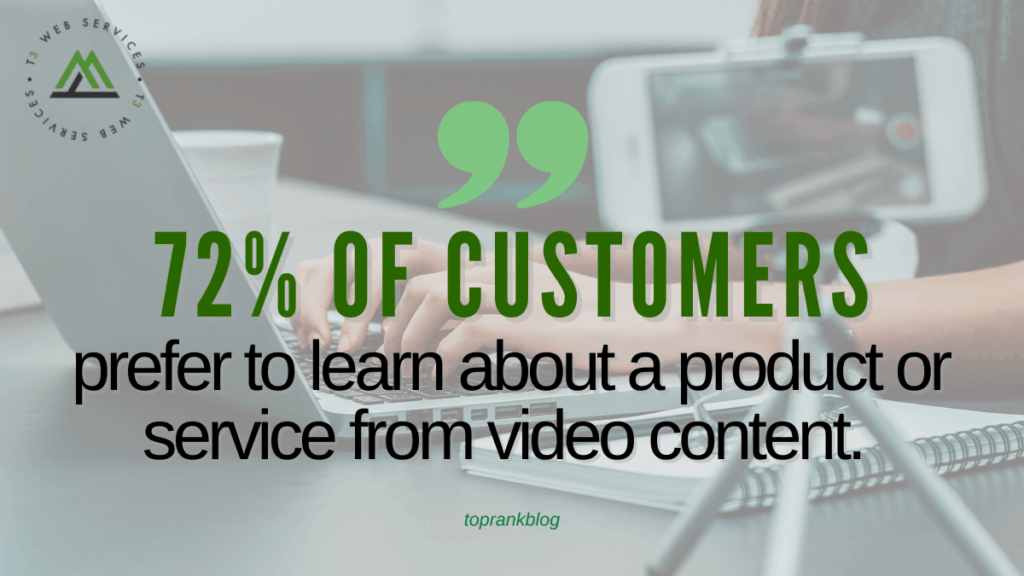

LinkedIn Acquires Tutorial Video App Jumprope as it Looks to Expand its Creator Tools
Microsoft-owned LinkedIn (client) has acquired video tutorial creation app firm Jumprope, with the array of creator tools from the acquisition set to help enhance LinkedIn Learning and other areas of the professional social media platform, the company recently announced. Social Media Today
3 in 4 B2B Marketers Are Planning Hybrid Events — Here Are Their Perceived Challenges
Providing digital events as good as in-person ones is the leading hybrid event challenge faced by B2B marketers, followed by logistical obstacles and convincing attendees to come to physical events, according to newly-released survey data of interest to digital marketers. MarketingCharts
LinkedIn to B2B marketers: It’s time to build your brand
B2B firms can benefit from building greater brand awareness, according to recently-released report data from LinkedIn, which also revealed that some 4 out of 5 U.S. B2B buyers would reconsider purchasing from a brand that they had previously rejected. Campaign US
Nielsen unveils solution for cookieless media measurement
Nielsen has disclosed information about its forthcoming alternative to browser cookie media measurement, with a new solution that will combine machine-learning techniques with available first-party data, the firm recently annnounced. AdAge

https://www.toprankblog.com/2021/08/b2b-marketing-news-080621/
How to Use the Optimize Text Per Person Feature to Improve Facebook Ad Performance
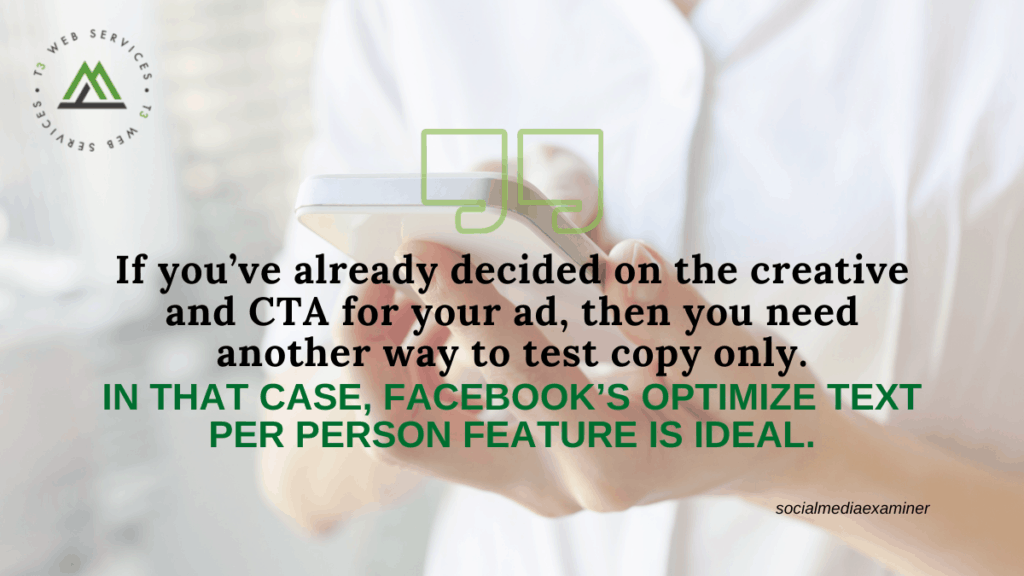

Are you ready to create a Facebook campaign that uses this new text optimization feature? Follow these four steps to get started.
Select a Campaign Objective
First, navigate to Facebook Ads Manager and click the green Create button to start a new campaign. Then choose one of the two campaign objectives that are compatible with this optimization feature:
- Traffic: Drive more clicks and views to your website.
- Conversions: Get more people to complete a specific action.
Choose Campaign and Ad Set Parameters
Next, set a daily or lifetime campaign budget and decide on a campaign bid strategy. Facebook ad campaigns run all the time by default but you can choose ad scheduling if timing is critical for your messaging or audience.
At the ad set level, set a start and end time. Then pick the audience(s) you want to target. As with other types of Facebook ads, you can choose from saved, custom, and lookalike audiences. You can also select manual placements on Facebook, Instagram, Messenger, and Audience Network—or let Facebook handle it automatically.
Set Up Your Ad
At the ad level, be sure to use the single image or video format and upload your creative. The ad text optimization feature doesn’t work with carousel or collection formats.
Then scroll down to the ad creative and toggle Optimize Text Per Person. Add at least one option for primary text, headline, and description. You can add up to five variations for each field, giving the Facebook algorithm extra options for optimization.

Content Refreshing: 4 Steps to Keep Top-Performing Content Fresh


Step 1. Conduct a Content Audit
The first step to refreshing content, whether it’s a one-off project or a regular refresh routine, is to conduct a content audit. Which metrics you want to look at will depend on your own goals for marketing and content strategy.
Here are some suggestions for which metrics to look at based on marketing goals:
- For top of funnel/awareness-driving blog posts, keep an eye out for declining traffic, search click-through rates, and rankings.
- For middle of funnel/nurturing content, look for declining engagement rates like the click-through rates to landing pages, or conversion rates on calls-to-action.
- For bottom of funnel/conversion content, look for declining purchases or signups.
Step 2. Identify Content Gaps
Think about both informational and strategic gaps, meaning how to make the content both more informative and higher performing.
On the information side, consider:
- Is there anything you need to add or expand on?
- Is there anything you can remove to tighten the focus?
- How can you improve the formatting and readability?
- Can you supplement the text with visual media?
Step 3. Remaster the Content
Once you’ve strategized how the old content needs to be remixed and improved, it’s time to start remastering it into something newer and better.
Step 4. Repromote the New Piece
Finally, once the refreshed content is live, it’s time to put it to work. You should promote a remixed and refreshed piece of content just as heavily as you would a new piece of content, if not more.

https://www.searchenginejournal.com/content-refreshing-step-by-step/411051/
Try These Storytelling Structures To Build, Strengthen, or Repair Your Brand
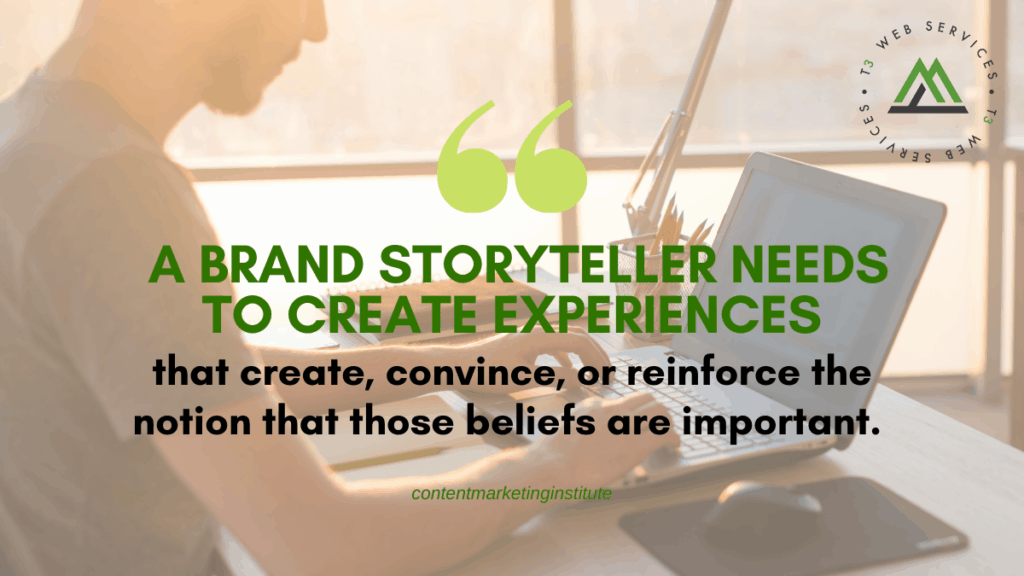

Content is stories – not the brand
In almost all cases, content leaders have minimal or no control over what the overarching brand stands for. Changing the brand story is either well above your pay grade, or it’s been established for decades, or (and probably most importantly) it’s different in the minds of the consumer than it is on your mission statement page.
This is why a brand’s stories are critical. As storytellers, your role is to understand how to create many original stories that demonstrate why people should care (the why behind the why) about the promise of the overarching brand story.
Pressure test for brand stories
Whatever the genesis for the idea, you may want to pressure test it to see how deep you can take that story. Perhaps – it’s a simple performance that’s really just best served as a surface-level TikTok video or a funny anecdote. Or maybe it’s really a deeper education idea that could be explored in a series of webinars or a white paper. Or perhaps it’s truly a platform that you can build an entire emotional story around.
Pressure test in action
Not every great story has an earth-shattering, differentiating answer to every attribute in the story architecture. But the better the answers, the better chance you have something truly worth exploring.

https://contentmarketinginstitute.com/2021/08/storytelling-structures-strengthen-brand/
How to Choose Pillar Page Topics
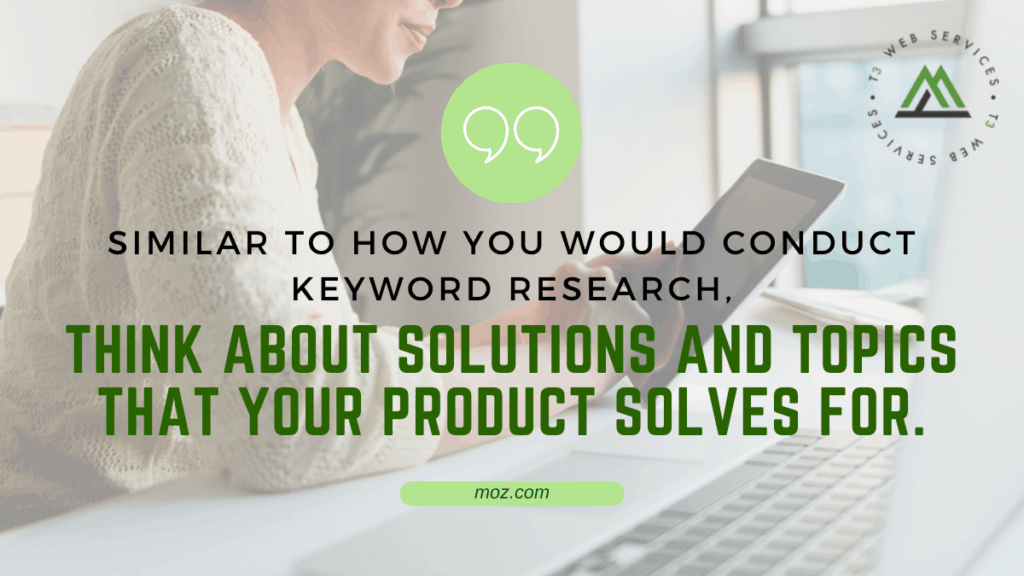

1. Choose a relevant solution.
Once you have a list of possible options, choose a topic that is broad enough to be able to create “cluster pages” around. A query that only poses a “yes” or “no” answer will not be suitable for this strategy.
2. Analyze the SERP
What sort of questions are being asked in the People Also Ask? Is there a featured snippet? Are there targeted ads on related topics? These are all great indicators that you’ve chosen the right topic. If your pillar page topic brings up none of these, perhaps it is better served as a cluster page, or maybe it isn’t the right topic for you at all.
3. Evaluate your content
Sort your existing content into topics. From there, you can identify pages that are similar. Can you re-prioritize any of the existing content to fit this strategy? Can you combine two pieces of content together? By the end of your content audit, you should be able to identify where your content gaps are.

https://moz.com/blog/choose-pillar-page-topics
Google On How to Check Page Experience Factors


HTTPS
This is a straightforward check. Your site either uses HTTPS or it doesn’t. If it does then you pass the check.
Mobile Friendliness
If your website is built with a modern, responsive design then it likely meets all the criteria for being mobile friendly.
In short, Google checks to make sure text isn’t too small to read, links aren’t too small to tap, and there aren’t any major signs that a site isn’t optimized for mobile devices.
No Intrusive Interstitials
Users should not be required to dismiss an interstitial before they can interact with the page. Ads on a page should not be disruptive to what a user is trying to accomplish.
It’s important to note that these requirements don’t apply to interstitials that are used for:
- Legal reasons (such as age verification)
- Cookies
- User logins
- Subscription paywalls

https://www.searchenginejournal.com/google-on-how-to-check-page-experience-factors/415997/


Leave a Reply